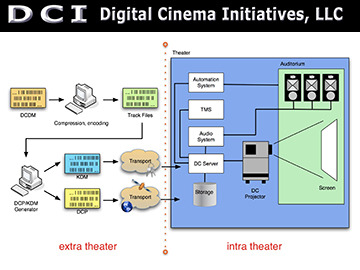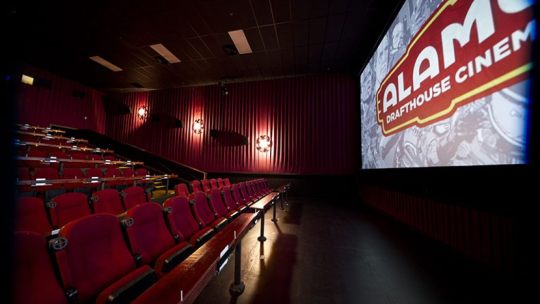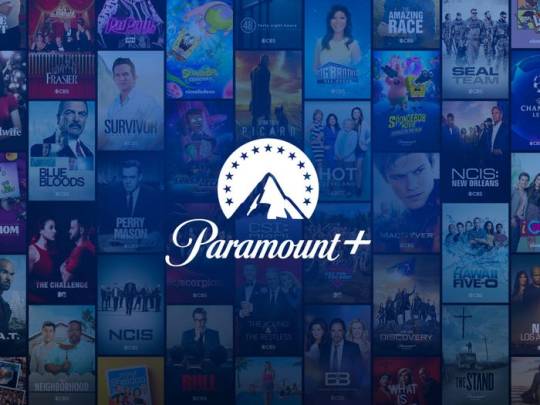#Ira Deutchman
Explore tagged Tumblr posts
Text

Seen in 2024:
Searching for Mr. Rugoff (Ira Deutchman), 2019
#films#movies#stills#docs#documentary#Searching for Mr Rugoff#Donald Rugoff#2010s#seen in 2024#womb chair#Ira Deutchman
0 notes
Text
Career By the Numbers, Featuring Amir Malin’s Ventures in Film and Media
A career in numbers showcases its unique specificity in the details of the journey, and its big-picture reach and impact. This is especially true for a career of varied and in-depth investment ventures and strategic initiatives in the media industry.
700% return in six years, mergers worth millions of dollars, and countless film assets distributed across the globe: looking at businessman and entrepreneur Amir Malin’s career in numbers we see a picture of one of the film business’s strategic leaders developing acuity and vision in all aspects of the film business over his decades of work.
Cinecom Films
Cinecom Film, an independent film company that became one of the most important studios of the 1980s, was founded by Amir Malin, Ira Deutchman, and John Ives in New York City in 1982.
Cinecom released over forty titles between 1982 and 1991, including its highest-grossing film A Room with A View (1985), an adaptation of E. M. Forester’s novel that was named Best Picture of the Year by the National Board of Review, and grossed over $25 million at the domestic box office.
Cinecom also released Stop Making Sense (1984), a cult classic concert film featuring the band The Talking Heads, and Matewan (1987), an award-winning drama which was re-released by Criterion in 2019. Cinecom was a major part of the rise of independent film in the 1980s.
In 1989, Cinecom was sold to SBK Entertainment World, an entertainment company, and Malin continued to serve as a consultant.
October Films
Major independent film production and distribution company October Films was founded in 1991 by Bingham Ray and Jeff Lipsky. Already seasoned in acquisitions and distributions, Amir Malin joined as the President in 1992 as part of an investment by Allen & Company and led product acquisition and strategy.
This included Lars Von Trier’s widely-acclaimed psychological drama Breaking the Waves (1996) and Palm D’Or winner Secrets & Lies (1996) among many others. October Films held a major significance to the landscape of American independent cinema during the 1990s.
Under Malin’s leadership, Universal acquired a major stake in October Films in 1997 in an effort to widen its distribution reach. The studio has since been incorporated into Focus Features, which distributes bold independent and foreign films. The Universal sale returned an average yearly ROI of over 20% to the original investment backers Allen & Company Investors. With the Universal transaction behind him Malin was recruited by Bain Capital to assist in its acquisition of Artisan Entertainment (at that time known as LIVE Entertainment).
Artisan Entertainment
Artisan Entertainment was founded in 1983 as USA Home Video Company and at its height was one of the largest mini-major film studios in America. After producing and distributing home videos, the company went through a series of acquisitions and branched out into TV distribution and other retail ventures under the consolidated company LIVE Entertainment.
In the 1990s, LIVE was producing films and financed Quentin Tarantino’s feature debut Reservoir Dogs (1992). Even after further acquisitions and productions throughout the decade, LIVE was straining to return on investments and was acquired and taken private in 1997 by investment company Bain Capital.
LIVE, rebranded as Artisan Entertainment, took a new direction with experienced media investor and business strategist Amir Malin as CEO of the company. Spearheading the home video distributor’s comprehensive financial reboot, Malin expanded their library of 2,500 titles to over 7,000 and focused on high-quality films. These included the high-grossing action film Terminator 2: Judgment Day (1991) and cultural classic It’s A Wonderful Life (1946).
Artisan quickly transformed into a high-velocity production studio that had expanded into multiple new markets in entertainment media. With both high-quality productions and new acquisitions like The Blair Witch Project (1999), Artisan’s financial performance improved and took off.
Artisan was the largest privately held independent film company in the world. If you include publicly held independent film companies then it was number 2, but only as Studio Canal (which is public) is the largest independent film company in the world. Its revenue had ballooned from $120 million at the time of Bain’s acquisition to over $400 million with $44.5 million in net earnings that year.
Qualia Capital
Amir Malin currently serves as the Chief Executive Officer of Qualia Capital, an asset manager firm that focuses on the media and entertainment industries, where he has been since 2005. Malin’s history and experience growing Cinecom, October, and Artisan inform his investment strategy expertise in content and business management, with large intellectual property asset portfolios.
Qualia’s principals, led by Malin, bring a wealth of experience and industry knowledge of successful business operations to active investment. Their experience with acquisition and distribution of intellectual property assets allows wide investor returns – and displays a deep profusion of insider knowledge on content assessment and entertainment marketing. Qualia has been leading entertainment and media asset investment for over fifteen years.

In looking at this career in numbers, we can see that in over 35 years in film and media, Malin’s efforts are represented by three incredibly successful company sales and millions of dollars in investment returns that have made an indelible mark and made him a leading figure in business.
0 notes
Text
1 note
·
View note
Photo

Watching Maria Maggenti’s newly restored “The Incredibly True Adventure of Two Girls in Love” at BAM the other night — it opened NewFest’s series, Queering the Canon: Rom-Coms — I was struck by the loud, lively audience the film attracted, filling BAM’s largest cinema. Folks were laughing raucously, talking back to the screen, and oohing & aahing at crucial moments in the small town, first love story. I haven’t that much fun watching a movie with a crowd in a very long time! And in many ways I saw a new, different movie from the one I watched back when it debuted in 1995. Maggenti’s first feature, “The Incredibly True Adventures of Two Girls in Love” premiered at Sundance that year. Out of film school and buoyed by excitement at seeing Rose Troche’s New Queer Cinema lesbian comedy “Go Fish,” for her script Maria mined her own first love story and merged it with screwball comedy elements to create a timeless, low-budget American indie, young love story. “The movie is about falling in love for the first time and thinking it’s forever,” Maggenti (right) said at the post-screening Q&A, alongside lead Laurel Holloman (left) and producer Dolly Hall (center). They shot the film on 16mm with $35,000 they were able to raise, borrowing cameras from NYU where Maria had finished studying. But the filmmakers didn’t have enough money to get across the finish line to their Sundance premiere and showed the movie to Ira Deutchman who bought it at Fine Line Features and “Two Girls” was released in June of 1995. That it hadn’t been available on digital platforms for so long left the film out of canonical conversations about American indie cinema and representation, yet — as Maggenti acknowledged the other night — in her film she intended to “upend expectations around race and class.” “Two Girls” is back after being nearly lost for years. Beautifully restored, it’s screening at some high profile venues soon and you can find it now on BluRay, iTunes, and Criterion Channel. Note to friends who book cinemas and program festivals: audiences love it! (at BAM Film) https://www.instagram.com/p/Cc_V9SCJG1N/?igshid=NGJjMDIxMWI=
1 note
·
View note
Text
'Tale Of King Crab' Launches Solid Italian Author List With Help From Cinecitta, Ira Deutchman - Specialty Box Office
‘Tale Of King Crab’ Launches Solid Italian Author List With Help From Cinecitta, Ira Deutchman – Specialty Box Office
A King Crab Story A cinematic jaw-dropping fairytale shot in rural Italy and Argentina, which opened this weekend with a three-day gross of $ 5,120 at Lincoln Center, the first of a series of Italian offerings to be on a special stage during the summer. “In today’s complex arthouse market, we consider this first achievement a success and believe the film will continue to find loyal audiences as…
View On WordPress
0 notes
Text
An Exploration of the Relationship Between Major Studios and the Arthouse Moviegoing Experience
While learning about the inner-workings of the independent cinema industry over the course of the semester, I have taken an interest in class discussions and coursework related to arthouse theaters, their history, and what sets them apart from commercial theaters. During the spring 2020 semester, I was a part of the Stonehill in the City program in Los Angeles where I interned for the In-Theater Marketing Department at Paramount Pictures (during my time spent in CA from January to March.) The In-Theater Marketing team primarily manages the promotion of new films within the theater environment (through the implementation of physical displays, trailer spaces during movie previews, and promotional offers and events,) elements related to the consumer’s movie-going experience, and correspondence between theaters and the studio.
In my research, I aim to explore the relationship between major studios, such as Paramount, and the arthouse moviegoing experience. This blog will investigate a general history of arthouse film exhibitors, how independent titles and theaters fit into mainstream entertainment, and insight into the link between studios and in-theater moviegoing from the perspective of Juliet Conroy, my former supervisor at Paramount, and from my personal experiences. I had the opportunity to interview Juliet over the phone, and she was also able to detail how the experience of physically going to the movie theater has permanently shifted due to COVID, and how the pandemic has impacted the status of both corporate and independent exhibitors.)
Digital Cinema Initiatives: An Example of the Relationship Between Major Studios & Exhibitors

Because a significant part of the consumer appeal to pursuing the arthouse theater experience is nostalgia, maintaining tradition, and breaking away from the hyper commercialized, digitized climate in which modern entertainment often lives, independent theaters frequently struggle to compete with larger corporate and franchise competitors. In a 2012 study conducted by Lisa Dombrowski, a Film Studies professional based at Wesleyan University, she analyzes the backgrounds of various Miami-area arthouse theaters, focusing on a “two-tiered exhibition sector: DCI-compliant art cinemas able to screen studio fare and potentially compete with commercial multiplexes vs. non-DCI-compliant art cinemas that are unable to digitally screen studio-affiliated films and thus focus on more independent or alternative programming.” DCI stands for “Digital Cinema Initiatives” and refers to an organization comprised of seven major film studios (MGM, Paramount Pictures, Sony Pictures Entertainment, 20th Century Fox, Universal Studios, The Walt Disney Company, and Warner Bros) that was established in 2002 to regulate the uniformity and quality of film exhibition in theater spaces. This organization is a key element of the connection between major studios and arthouse film exhibitors, as it has set an industry standard that needs to be met by any theater owners who wish to have the freedom to show potentially lucrative blockbuster titles. It is vital that arthouse theaters have the option to offer more mainstream titles to audiences, as a balance between niche programming and popular pictures is typically what creates the space for them to set themselves apart while financially staying afloat.

Following the annual state of the industry address delivered by John Fithian, the President of the National Association of Theater Owners, at the CinemaCon convention in May of 2011, Dombrowski summarizes that “while a predominantly digital future gets closer for exhibitors of all kinds, the motivation, means, and models for the arrival of digital projection in first-run commercial cinemas are distinctly different than those for art houses.” This creates a point of contention for arthouse cinemas, as “issues of access and programming flexibility inspire the art house drive to digital, while the financial challenges inherent to conversion have led to a much wider range of options regarding how digital copies of films will be distributed and exhibited.” This desperation to experiment with adapting more antiquated methods of showing film is “driven by the major studios’ desire to reduce the cost of printing and shipping film, the appeal of new 3D technology, and the promise of superior image quality without print degeneration,” as corporate theater chains have more economic and technological flexibility than independently run arts institutions.

When faced with such a predicament, several of the Miami area arthouse cinemas featured in Dombrowski’s study pursued creative options to remain open and in healthy competition with commercial exhibitors. Some have sought out strategies like including both “non-filmic ‘alternative content’, such as live music performances, sports, opera, theater, and ballet” and films shown on both 35mm and digital on their theater calendar. According to Ira Deutchman, the co-founder of Emerging Pictures (a digital theater network,) “It’s gotten easier convincing the art houses that they need digital. At the beginning it was like pulling teeth. Art houses are now sizing up when and how, not if.” Although undergoing the transition to install DCI-compliant entertainment systems is often a financial burden for independently run theaters, it ultimately allows for more effective discourse between struggling arthouse cinemas and major studios (and therefore, allows for them to thrive when faced with corporate competitors.) The establishment of DCI standards has also led to the growth of “larger commercial art house chains, such as Landmark Theaters, Sundance Cinemas, City Cinemas, Laemmle Theatres, and Alamo Drafthouse Cinemas” because they “rely on films from the major studio affiliates” whilst offering more streamlined, specialized content for niche demographics that prefer the arthouse movie-going experience.
The frequency and lower price range with which independent film titles are released on digital (as opposed to the traditional format of 35mm film) is another convenient allure for arthouse cinemas to make the switch. This flexibility gives them the freedom to “more easily hold onto a film for several weeks and build an audience or roll it out in any number of release patterns” so they can “help operators to nimbly take advantage of unanticipated crowd-pleasers” (and therefore, avoid being cornered into making potentially inaccurate guesses about projected revenue.) Joining the majority of theaters (both arthouse and commercial) in exhibiting films on digital also allows for independently run arthouse cinemas to welcome more programming opportunities, “for example, one hundred art theaters around the country might premiere a film on the same night, and all link up via satellite or Skype for a Q & A with the film’s director afterwards.” Overall, although the establishment of DCI standards is costly and has hindered the ability of some arthouse cinema directors to maintain the implementation of traditional film exhibition methods, in the long run, the standards will hopefully aid in fostering a more inclusive and less monopolized environment within the movie-going industry. Possessing DCI-compliant equipment is the key to upholding the studio-exhibitor relationship.
Perspective from Working at a Major Studio

Last week, I had the opportunity to speak with Juliet Conroy, the Director of Material Logistics in the In-Theater Marketing Department at Paramount Pictures (and my former internship supervisor.) It was really engaging to hear about her personal experiences and the experiences of her colleagues related to the comparison of smaller indie exhibitors to larger corporate exhibitors, how major studios are connected to the cultivation of the consumer’s movie-going experience, and how COVID has affected (and will forever change) the tradition of film exhibition. I was also interested in hearing how so much of her professional involvement is directly relevant to subjects that have been touched upon in our study of independent cinema throughout the semester.
According to Juliet, the studio has more limited contact with specifically indie exhibitors; however, they work directly with franchise arthouse cinemas such as Alamo Drafthouse. These chain arthouse theaters are smaller so they are more flexible and can cater to a more specific audience; however, they are private, so they have more limited opportunity for income from stockholders. A major issue being faced by independent theaters is the financial burden of continuing to pay for rent whilst unable to open at a high enough capacity to generate a sustainable income. Because theaters are technically allowed to reopen, landlords and corporate real estate companies that rent space in expensive areas often immediately demand rent payments, even if theater owners choose not to instantaneously reopen. Juliet lives in Culver City, a more residential neighborhood within Los Angeles, and she says many arthouse-type theaters have been driven out of the area because rent has been driven up since companies like Amazon, Apple, and Sony have moved in.

Larger, corporate theater companies also struggled during the pandemic, as AMC experienced a spike in stockholders that narrowly saved them from filing for bankruptcy. Both independent and corporate theaters were forced to find creative ways to bring in audiences when studios weren’t comfortable debuting major titles. Some theaters introduced promotions in which they customized some screenings to more specific audiences, and major studios began selling them repertory titles (such as successful classics and horror films.) Additionally, some theaters (such as the infamous Arclight Hollywood) owed too many studios money for titles and could not keep up with the accumulation of costs (and were unfortunately faced with too much debt to remain open.)
Juliet is confident that major studios are “never going to have this opportunity to change the way business is done” again – “it’s time for studios to rethink how they want to spend their marketing dollars, inside the theater and outside the theater, and whatever makes it most worthwhile.” This unique opportunity to restructure the movie-going experience has cultivated an environment in which streaming and in-person entertainment can begin to coexist more harmoniously. Typically, lower-rated films peter out quickly, and more successful blockbusters live in theaters for about 90 days. Now, following a Viacom shareholder meeting, Paramount officially plans to select certain titles (that are predicted to be successful and draw consumers) to live in theaters for 45 days and then be introduced to streaming. Soon after, Warner Bros. announced a similar plan for their 2022 release calendar.

Recently, Paramount introduced their own streaming service, Paramount Plus. Juliet claims that the introduction of the streaming service has not really affected her department, and from her perspective, the studio created the platform with the intention of having more flexibility with releases in the future. She says the studio is not typically exclusive with their content (like Disney Plus and HBO Max,) but rather, they evaluate each release on a case-by-case basis and “always do what’s best for the studio and the fans.” For example, recently, Paramount sold off titles like Billie Holiday to Hulu and Coming 2 America to Amazon.

In the last few weekends, box office numbers have been significantly higher, and for the first time, the numbers are comparable to the weekend prior to the commencement of COVID shutdown. Godzilla vs. Kong has been doing notably well as one of the first major films to exclusively debut in theaters since COVID affected the industry. Juliet says “there’s still a want to have the shared experience of watching the big screen,” so despite the obvious spike in popularity of streaming services over the past year, as more reliable safety protocols for theater cleaning, keeping customers and employees safe, and increasing public comfort have been developed, we will begin seeing major titles be debuted in titles again this summer. Juliet explained that as of right now, after Memorial Day weekend, every weekend of the summer has a major title scheduled to debut in theaters. She also disclosed that Disney keeps shifting the opening dates for their titles, which creates a domino effect in which other studios question their decision to debut their major titles and then shift their opening dates. Paramount is opening A Quiet Place 2 in theaters on Memorial Day weekend after it was originally supposed to debut in March of 2020, as the studio hopes to maximize the potential income from the film franchise and make a notable comeback as COVID restrictions are more drastically lifted.
Overall, after considering some of the ways in which major studios are tied to both independent and corporate exhibitors, it is evident that flexibility and creativity between both parties is necessary to the existence of the movie-going experience. As pandemic restrictions are gradually adjusted, vaccine numbers increase, and audiences decide to take advantage of our return to “normal,” we will see that no matter how convenient and accessible streaming content is, consumers will always return to traditional movie-going.
Sources
Dombrowski, Lisa. “Not If, But When and How: Digital Comes to the American Art House.” Film History, vol. 24, no. 2, 2012, pp. 235–248. JSTOR.
Zhen-Song Wang et al., "A Digital Cinema Playback system compliant with the DCI specification," 2009 Picture Coding Symposium, 2009, pp. 1-4.
Symeou, Pavlos C., et al. “Cultural Agenda Setting and the Role of Critics: An Empirical Examination in the Market for Art-House Films.” Communication Research, vol. 42, no. 5, July 2015, pp. 732–754.
https://www.indiewire.com/2020/03/quiet-place-part-2-first-reviews-reactions-1202215892/
https://www.rogerebert.com/reviews/godzilla-vs-kong-movie-review-2021
https://www.cnbc.com/2021/05/07/amc-ceo-adam-aron-raved-about-its-reddit-investors-on-an-earnings-call.html
https://www.theverge.com/2021/2/24/22299615/paramount-plus-launch-date-price-cbs-all-access-shows-movies
https://www.cbsnews.com/news/movie-theaters-covid-reopening-attendance-questions/
https://www.verywellhealth.com/movie-theater-covid-fully-vaccinated-5120468
0 notes
Link
These days, it seems like you can find a way to stream most anything: big studio action flicks, recent indie hits, last year’s Oscar nominees. But for lovers of Hollywood Golden Age classics, foreign movie buffs, teachers and students of film studies — and viewers who want to watch movies that expand their mind and worldview — nothing compares to FilmStruck.
Now it’s going away.
In an announcement on Friday, Turner and Warner Bros. Digital Entertainment announced that the company would be shutting down FilmStruck at the end of November, ceasing operations on November 29. Variety reported that sources said the decision was made before AT&T closed its deal with Time Warner, but that “the strategy aligns with the new WarnerMedia blueprint to shift resources to mass-market entertainment services.”
The corporation’s explanation for the shutdown said that it was “incredibly proud” of the FilmStruck team’s “creativity and innovations,” but it is “largely a niche service.”
“We plan to take key learnings from FilmStruck to help shape future business decisions in the direct-to-consumer space and redirect this investment back into our collective portfolios,” the statement said.
Following the announcement, the Criterion Collection, which offered much of its library on FilmStuck, released its own statement about the shutdown that seemed to make it clear the decision was unwelcome. “Like many of you, we are disappointed by this decision,” the announcement reads, adding that the company would “be trying to find ways we can bring our library and original content back to the digital space as soon as possible.”
On Twitter, the platform’s large community of cinephiles, critics, and filmmakers almost instantly began mourning the loss of the service and what it represented:
Like… I went into @FilmStruck a little under the weather and before taping anything received a homemade fennel and pea shoot soup, like… these were flesh and blood people who really, truly cared about the work they were doing and the people who made and appreciated film
— Barry Jenkins (@BarryJenkins) October 26, 2018
An industry that can’t find the spare change to keep alive one lousy little #filmstruck shouldnt be surprised a few years from now when people lose all interest in their major product – movies
— Richard Rushfield (@richardrushfield) October 26, 2018
Pulling the plug on #FilmStruck shows that Warner Media is focused on near-term results & not very savvy about the future of their business or the best use of their assets.
— Ira Deutchman (@nyindieguy) October 26, 2018
Looks like they’re folding the non-Criterion stuff into whatever the Warner Bros. streaming service ends up looking like, but THIS IS BAD, AND I DON’T LIKE IT. https://t.co/gE0fc1vWd6
— Todd VanDerWerff (@tvoti) October 26, 2018
The dissolution of @Filmstruck isn’t just a cinephile inconvenience, it represents a narrowing of our widespread exposure to diverse artists. Filmstruck is the only major streaming service seriously pushing the heritage of world cinema, queer cinema, women directors & it’s over.
— Ryan Perez (@ryguyperez) October 26, 2018
Launched just a little more than two years ago by Turner, the service at first streamed the Turner Classic Movies library to web browsers and eventually to other devices, including tablets, Roku, and Apple TV. FilmStruck soon became the exclusive home of Criterion’s streaming library, which releases high-quality versions of many of the best foreign and arthouse films ever made, and early this year added the Warner Bros.’ library of classic films as well, replacing WB’s Warner Archive service, which was shut down.
For about $20 per month (or less, if you paid annually or qualified for a student membership), FilmStruck subscribers could stream films by masters of world cinema like Akira Kurosawa, Alfred Hitchcock, John Cassavetes, Chantal Akerman, and Francois Truffaut. Curators at FilmStruck created collections around all kinds of topics — recent collections range from “Written by Robert Louis Stevenson” to “Spotlight on Women Directors” to “Moments of Truth: The Best of Cinéma Vérité.”
FilmStruck offered access to classic, foreign, independent, and cult cinema for a low subscription price. FilmStruck
Even people who weren’t long-term cinephiles, but interested in becoming more educated on the popular art form, could find helpful, accessible, non-snooty features designed to do just that. The ongoing “Friday Night Double Feature” series, for instance, featured two classic films that complement one another (like Arsenic and Old Lace and The Body Snatcher, for instance) paired for easy viewing, with some text explaining the link.
Filmstruck also did a stellar job of linking contemporary cinema with film history. This fall, for instance, with the release of Bradley Cooper’s remake of A Star Is Born, the service released all three of the previous versions of the film, plus a 19-minute interview with Cooper. Special features created just for FilmStruck, like interviews and collections curated by filmmakers, novelists, and others were invaluable to people seeking to expand their understanding and enjoyment of the films they loved.
Certainly, there are other options for established and aspiring cinephiles, even those who don’t live in cities like New York, where art house and repertory cinema is still alive and well. Many classic films are available to digitally rent on services like iTunes and Amazon. Hulu sometimes streams classic films. A handful (but regrettably a rather sad one) of classic films is available on the ubiquitous Netflix.
Lesser-known services like Mubi make some of the kinds of films that you might find on FilmStruck available for a monthly subscription, and many public libraries make the Kanopy library, which includes some classic and Criterion films, available to their cardholders. And of course, there’s always physical media — if you can afford it.
One more media conglomerate takes down the little guy. RKO
But FilmStruck’s commitment to making classic, cult, foreign, and independent film available at a low price and with clever, accessible special features is still unmatched. For teachers and students, it was an invaluable resource. In an age when it’s harder than ever to become a cinephile — when everything seems to be available, but some of the greatest works of cinema are the hardest to find — FilmStruck helped fight the tyranny of the urgent, the feeling that contemporary cinema is all there is, and the loss of a sense of film history.
Hopefully Criterion and Turner Classic Movies will find a platform as welcoming and thoughtful as FilmStruck. In the meantime, it’s another dispiriting example of a media conglomerate shutting down a small but well-loved service — and a blow to cinephiles everywhere.
Original Source -> RIP FilmStruck, one of classic cinema’s last refuges in the streaming era
via The Conservative Brief
0 notes
Photo


ira deutchman, the raging grannies, and the audience traverse city, aug 2014
1 note
·
View note
Photo

Coffee and Conversation with Ira Deutchman at the Lake Placid Film Forum:
A discussion of arthouse convergence and how North Country Theaters can continue to play a vital part of the shared experience in an age of diversified media. We encourage everyone to attend and welcome your input – What would YOU like to get out of your local theatre?
Ira Deutchman has been making, marketing and distributing films since 1975, having worked on over 150 films including some of the most successful independent films of all time. He was one of the founders of Cinecom and later created Fine Line Features—two companies that were created from scratch and in their respective times, helped define the independent film business.
Currently Deutchman is Managing Partner of Emerging Pictures, a New York-based digital exhibition company. He is also a Professor of Professional Practice in the Graduate Film Division of the School of the Arts at Columbia University, where he is the head of the Producing Program.
0 notes
Photo

Hoop Dreams Reunion at the Film Society of Lincoln Center
Frederick Marx, Peter Gilbert, Ira Deutchman, Arthur Agee and Steve James
#Hoop Dreams#Steve James#Peter Gilbert#Ira Deutchman#Frederick Marx#Arthur Agee#Lincoln Center#documentary#screening
2 notes
·
View notes
Photo

Cheers to Bo Burnam, Bing Liu, Elsie Fisher, Diana Quon, Mary Jane Skalski, Anne Carey, Ira Deutchman, Arianna Bocco, Nicholas Ma, Peter Sobiloff, Frank Marshall, Raul Castillo, Eric Kohn, Tamara Jenkins, Kayli Carter, Wendy Keys, Paul Schrader, Debra Granik, Bob Berney, Ari Aster, Laura Kern and everyone who attended today’s annual @FilmLinc & @FilmCommentMagazine winter luncheon today at @LincolnRistorante! (at Film Society of Lincoln Center) https://www.instagram.com/p/BsZ19g3gDwv/?utm_source=ig_tumblr_share&igshid=a07xntuztwzt
0 notes
Photo

Earlier today at Columbia U, celebrating Ira Deutchman. Cheers!! (at Lenfest Center for the Arts at Columbia University School of the Arts) https://www.instagram.com/p/BoAUo_qgjAC/?utm_source=ig_tumblr_share&igshid=17ob0g8p4r5fw
0 notes
